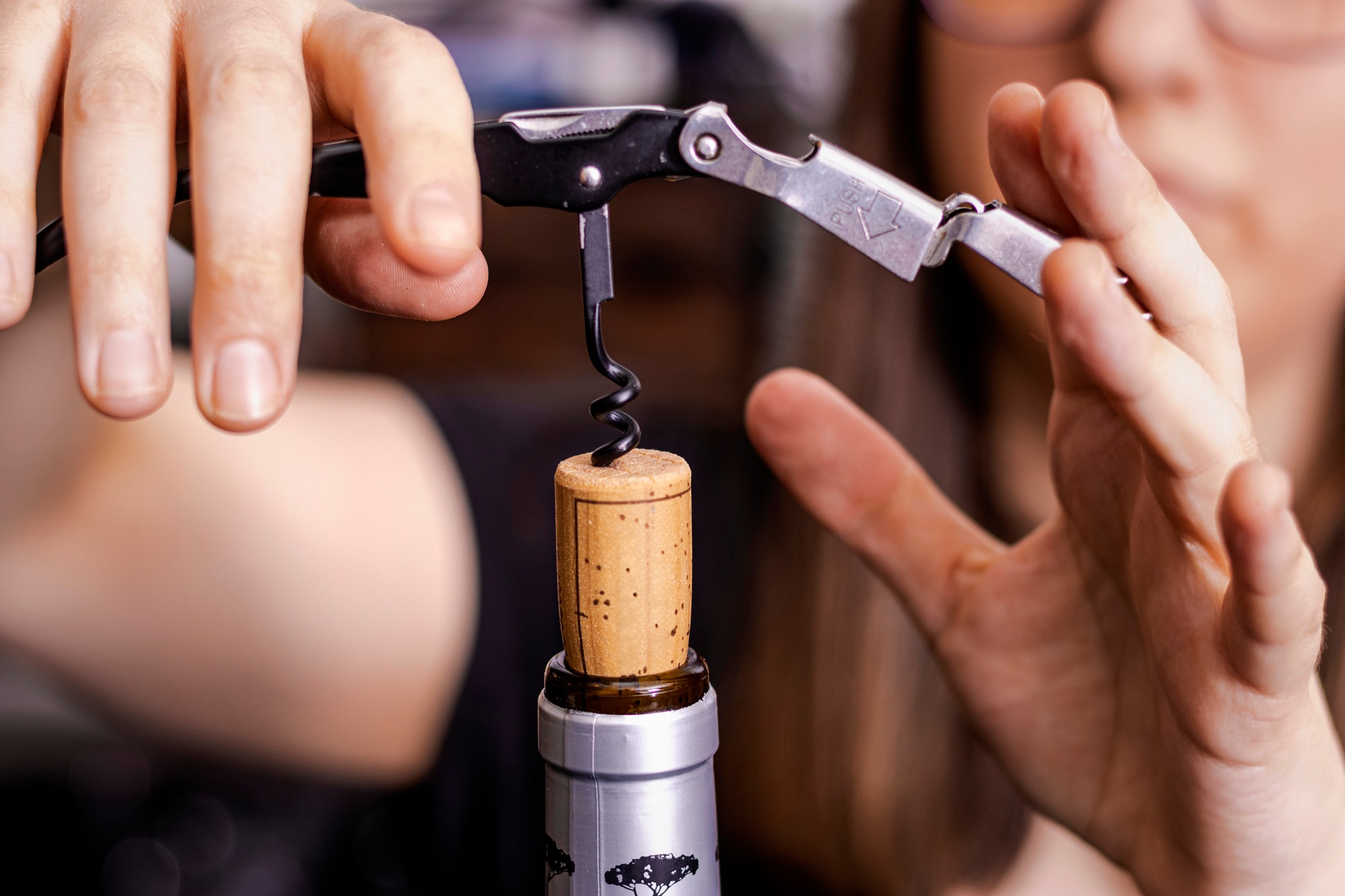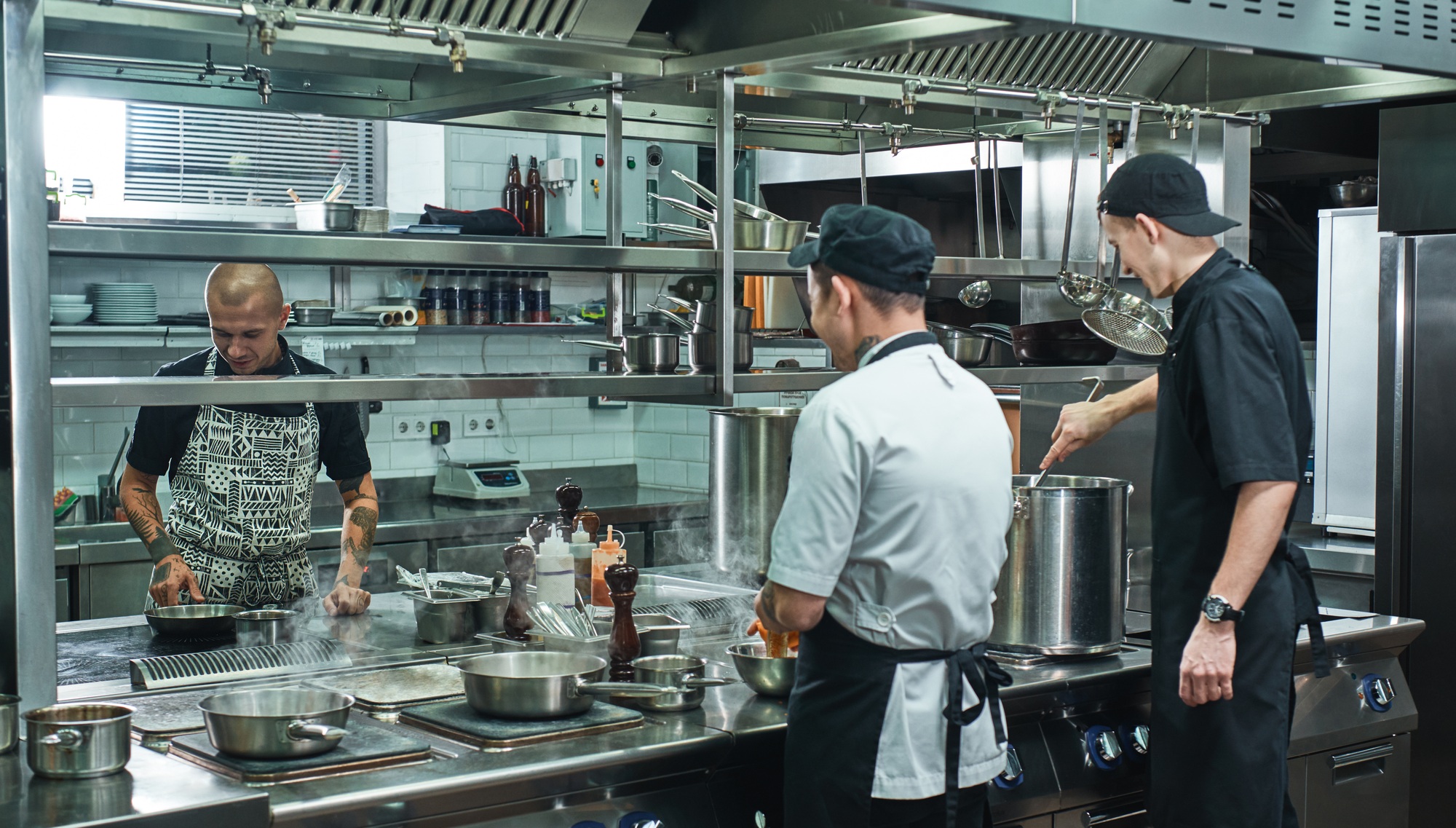Key Takeaways

- Conduct Thorough Market Research: Understand local dining trends, identify gaps in the market, and assess customer preferences to shape your restaurant concept.
- Create a Comprehensive Business Plan: Outline your vision, financial projections, and operational strategies which will serve as a roadmap for your restaurant and attract potential investors.
- Choose the Right Location: Analyze foot traffic and competition to select a prime site that aligns with your target audience, enhancing visibility and customer attraction.
- Develop a Unique Menu: Focus on quality ingredients and diverse offerings, ensuring pricing reflects both value and profitability to entice customers.
- Implement Effective Marketing Strategies: Build your brand identity, create a marketing strategy, and utilize social media to generate buzz and engage your audience before the grand opening.
- Prepare for Opening Day: Schedule a soft launch to test operations, gather initial feedback, and refine services before planning a grand opening event to create a memorable experience for customers.
Opening a restaurant is an exciting venture that combines passion for food with the thrill of entrepreneurship. Whether you dream of serving gourmet dishes or creating a cozy café atmosphere, it’s essential to navigate the complexities of the restaurant industry. With the right guidance and a solid plan, you can turn your culinary dreams into reality.
How to Open a Restaurant

Opening a restaurant involves several essential steps that streamline the process. Follow these key steps to achieve success in your small business venture.
- Conduct Market Research
Evaluate the local dining scene. Identify gaps where your restaurant can thrive. Assess customer preferences and trends to shape your concept.
- Create a Business Plan
Outline your vision, target audience, and financial projections. Include a detailed menu, marketing strategies, and an operational plan. A solid business plan increases your chances of securing funding.
- Secure Financing
Investigate funding options like loans, investors, or personal savings. Prepare a robust financial presentation to attract potential investors. Ensure you account for start-up costs and ongoing expenses.
- Choose a Location
Select a prime location that aligns with your target market. Analyze foot traffic, competition, and accessibility. A well-chosen location enhances visibility and attracts customers.
- Obtain Necessary Licenses
Research local regulations and required permits. Acquire food service licenses, liquor licenses, and health permits. Compliance with regulations ensures smooth operations.
- Design Your Restaurant
Create an inviting ambiance that reflects your brand. Incorporate functional layouts for the kitchen and dining areas. A well-designed space enhances customer experience.
- Build a Menu
Develop a unique and appealing menu. Focus on quality ingredients and diverse options. Balance pricing to achieve profitability while attracting customers.
- Hire Staff
Recruit skilled personnel for kitchen and front-of-house positions. Look for individuals who embody your restaurant’s vision. Training ensures high service standards.
- Market Your Restaurant
Implement marketing strategies to generate buzz before the opening. Utilize social media, local advertising, and partnerships with influencers. Building anticipation engages potential customers effectively.
- Launch and Operate
Prepare for a successful opening day. Monitor operations closely to ensure efficient service. Collect feedback to make continual improvements.
Each step plays a crucial role in establishing a thriving restaurant. Implementing these steps leads to a well-rounded approach in your exciting journey to open a restaurant.
Research and Planning

Research and planning form the foundation of how to open a restaurant. Thorough preparation ensures awareness of market dynamics and consumer preferences.
Understand the Market
Understand the market landscape through detailed research. Gather insights from primary sources such as focus groups and online surveys. Analyze secondary resources like industry reports and research papers for additional data on consumer habits.
Identify Your Target Audience
Identify your target audience to tailor your offerings effectively. Segment your audience based on demographics, preferences, and dining habits. Focus groups and surveys reveal valuable insights that guide menu creation and marketing strategies.
Conduct Competitor Analysis
Conduct competitor analysis to evaluate the strengths and weaknesses of nearby eateries. Visit competitors to gauge their offerings, pricing structures, and customer service. Analyze their market positioning to uncover opportunities for differentiation.
Create a Business Plan
Create a comprehensive business plan to outline your restaurant’s vision and operational blueprint. Include a description of your restaurant concept, strategies for marketing, and financial projections. A well-crafted business plan attracts investors and serves as a roadmap during your restaurant’s launch.
Fundraising and Financing

Securing adequate funding and financing is crucial for your restaurant’s success. A well-structured approach ensures stability during the startup phase.
Determine Startup Costs
Identifying your startup costs involves evaluating various factors such as location, restaurant concept, size, and amenities. On average, total startup costs range from $95,000 to over $2 million. For a small business, anticipate costs between $175,500 and $750,500, with an average of $375,500. Additionally, costs per square foot vary significantly, averaging $100 to $800, with a median cost of $450. Thoroughly understanding these figures helps you configure a realistic budget.
Explore Funding Options
Several funding options exist to support your venture.
- Personal Savings: Utilizing your own savings offers full control over your investments.
- Loans: Securing small business loans from banks or financial institutions provides necessary capital without sacrificing equity.
Each option presents unique benefits and constraints tailored to your specific needs.
Create a Financial Plan
A comprehensive financial plan serves as a pivotal tool for your restaurant. Outline detailed revenue projections, expense estimates, and strategies for managing cash flow. Incorporate realistic projections based on market research and competitor analysis. Regularly revising this plan allows you to adapt to changing market conditions and assess your financial performance continuously. Crafting an effective financial plan fortifies your restaurant against unforeseen challenges.
Location and Design

Selecting the right location and designing an inviting restaurant is crucial for attracting customers and ensuring your small business thrives. Focus on these critical aspects.
Choosing the Right Location
Choosing the right location is crucial for your restaurant’s success. Analyze rent affordability by ensuring it remains within 6% to 8% of projected annual sales while including real estate taxes, fire insurance, and common area maintenance charges. Evaluate demographics to match local characteristics with your restaurant concept. Study factors such as per capita income, household income, and the area’s ethnic mix to guarantee financial viability. Recognize customer behavior by assessing the trade area draw to understand the distance potential customers travel to dine at your restaurant.
Designing Your Restaurant Layout
Designing your restaurant layout significantly impacts customer experience and operational efficiency. Prioritize a welcoming ambiance that reflects your concept through color schemes, furniture, and decor. Arrange seating to optimize space and facilitate smooth customer flow, ensuring adequate room for servers and diners. Implement an open kitchen design to enhance transparency and engagement or create private dining areas for an intimate atmosphere. Additionally, choose durable materials for high-traffic areas to ensure long-lasting quality and ease of maintenance.
Acquiring Necessary Permits and Licenses
Acquiring necessary permits and licenses is essential for operating legally and smoothly. Research the specific regulations in your area regarding health permits, food service licenses, and business licenses. Prepare to submit applications and pay associated fees, which may vary by location. Be aware that the approval timeline can span several weeks to months. Consult local health departments and regulatory agencies for accurate and updated information to streamline the process. Ensure full compliance to avoid costly delays or penalties during your restaurant’s launch.
Menu Development

Effective menu development plays a vital role in attracting customers and maximizing revenue for your small business. Focus on the following key aspects to create a compelling menu.
Designing Your Menu
Design your menu with clarity and organization. List items in distinct categories such as starters, mains, and desserts. Highlight high-profit items first to encourage customer choices that benefit your bottom line. Use appealing descriptions to encourage patron interest while ensuring the layout remains visually inviting.
Sourcing Ingredients
Source fresh ingredients to enhance dish quality. Prioritize local farmers and suppliers to support the community and ensure seasonal menu offerings. Establish reliable relationships with vendors that can provide consistency in flavor and availability. Utilize seasonal ingredients to keep your menu dynamic and appealing to returning customers.
Pricing Your Dishes
Price your dishes strategically to reflect value while ensuring profitability. Consider food costs, labor, and overhead when setting prices. Conduct research on competitor pricing for similar cuisines to remain competitive without sacrificing quality. Regularly review and adjust pricing based on market trends and ingredient costs to maintain a sustainable operation.
Hiring and Training Staff

Hiring and training staff significantly impact your restaurant’s success. Here are the crucial steps you must follow.
Creating Job Descriptions
Create accurate job descriptions. Each description should outline specific tasks and responsibilities. Include real-world examples to clarify expectations. Job descriptions attract suitable candidates and reduce job offer rejections along with employee turnover.
Recruiting Employees
Promote job openings through multiple channels. Utilize social media, local job boards, and your restaurant’s website for visibility. Seek referrals from current employees, as they can recommend reliable candidates. Consider launching as a pop-up restaurant or food truck to test your concept and build a team before full-scale operations.
Training Your Team
Implement a structured training program. Clearly define training objectives to ensure consistency and maintain quality. Conduct regular training sessions that cover customer service, food preparation, and safety protocols. Monitor staff performance and provide constructive feedback to foster growth.
Marketing and Promotion

Effective marketing and promotion strategies lay the foundation for attracting customers and establishing your restaurant in the competitive landscape. Focus on building your brand, creating a marketing strategy, and utilizing social media to maximize your reach.
Building Your Brand
Build a unique brand identity that resonates with your target audience. Define your restaurant’s theme, values, and mission to create a cohesive image. Develop an appealing logo and select a consistent color palette to enhance brand recognition. Showcase high-quality visuals of your restaurant ambiance and dishes on various platforms. Regularly communicate your brand story to forge emotional connections with potential customers.
Creating a Marketing Strategy
Create a comprehensive marketing strategy that outlines your promotional activities. Identify your target audience based on demographics, preferences, and dining habits. Analyze competitors to discover effective tactics and opportunities for differentiation. Allocate a budget for marketing activities, ensuring to include both online and offline initiatives. Focus on local advertising, partnerships with nearby businesses, and participation in community events to enhance visibility. Regularly assess the effectiveness of your strategy, making adjustments based on performance metrics.
Utilizing Social Media
Utilize social media platforms to amplify your restaurant’s presence. Engage with potential customers by sharing enticing content such as daily specials, behind-the-scenes glimpses, and customer testimonials. Choose platforms like Instagram and Facebook to showcase vibrant images of your dishes. Implement targeted advertising to reach specific audiences based on location or interests. Encourage user-generated content by prompting customers to share their dining experiences and tag your restaurant. Maintain an active online presence by responding to comments and messages promptly, building a loyal community around your restaurant.
Opening Day Preparations

Opening day preparations are crucial for launching your restaurant smoothly. Focus on key elements such as scheduling a soft launch and planning the grand opening.
Scheduling a Soft Launch
Schedule a soft launch to test operations and gather initial feedback. Consider running this event 1 to 2 weeks before the grand opening. Invite a select group of guests, including friends, family, and loyal customers. Ensure that you offer a limited menu to streamline service. Collect feedback on food quality and service to make necessary adjustments. Track guest interactions to assess team’s readiness and identify areas for improvement.
Planning the Grand Opening
Plan the grand opening meticulously to create a memorable experience. Select a date that allows sufficient time for preparation and marketing, typically 1 to 2 months after the soft launch. Incorporate promotional strategies such as special discounts, live entertainment, and local partnerships to attract customers. Advertise through social media and local channels to maximize reach. Ensure the restaurant is fully staffed and trained to manage a busy opening day effectively.
Troubleshooting Common Issues

Opening a restaurant presents challenges, including staff shortages, supply chain disruptions, and customer feedback management. Addressing these issues promptly ensures sustained operations and customer satisfaction.
Addressing Staff Shortages
Creating a flexible staffing plan attracts diverse candidates and adjusts to employee availability. Utilizing platforms such as job boards and social media facilitates reaching potential hires. Implementing incentive programs, including bonuses and flexible shifts, boosts employee retention and morale. Providing ongoing training opportunities enhances skills and encourages growth among existing staff.
Handling Supply Chain Disruptions
Establishing relationships with multiple suppliers ensures consistent access to essential ingredients and materials. Regularly reviewing inventory levels enables timely reordering of high-demand items. Implementing a backup menu with alternative dishes minimizes operational disruptions during supply shortages. Staying informed about industry trends prepares you for shifts in availability or pricing.
Managing Customer Feedback
Encouraging customer reviews through various platforms increases awareness of their experiences. Responding to feedback with professionalism shows commitment to improvement. Analyzing feedback trends helps identify areas for menu adjustments or service enhancements. Implementing changes based on constructive criticism fosters a loyal customer base and improves overall service quality.
Conclusion

Opening a restaurant is an exciting journey filled with opportunities and challenges. By following the essential steps outlined in this guide you can navigate the complexities of the industry with confidence. From conducting thorough market research to developing a unique menu and effective marketing strategies every decision you make plays a crucial role in your restaurant’s success.
Stay adaptable and ready to tackle any challenges that arise. With the right planning and dedication you can turn your culinary dreams into a thriving reality. Embrace the process and enjoy every moment as you create a space that reflects your passion for food and hospitality. Your restaurant adventure awaits.
Frequently Asked Questions

What are the key steps to opening a restaurant?
Opening a restaurant requires several essential steps: conducting thorough market research, creating a comprehensive business plan, securing financing, choosing a prime location, obtaining necessary licenses, designing an appealing restaurant space, developing a unique menu, hiring skilled staff, and implementing effective marketing strategies.
How important is market research before opening a restaurant?
Market research is crucial as it helps identify opportunities and understand customer preferences. Analyzing competitors, demographics, and industry trends will guide your menu and service offerings, ensuring your restaurant meets the needs of your target audience.
What are the typical startup costs for a restaurant?
Startup costs for a restaurant can vary widely but generally range from $175,500 to $750,500. Factors such as location, concept, and size influence these expenses, which may include rent, equipment, staffing, and inventory.
How can I secure funding for my restaurant?
You can secure funding through various sources including personal savings, small business loans, crowdfunding, and investors. Assessing your startup costs and creating a solid business plan will help attract potential funders and lenders.
Why is location important for a restaurant?
The location is crucial for attracting customers and ensuring financial viability. Factors like rent, local demographics, foot traffic, and accessibility all play significant roles in a restaurant’s potential for success and growth.
What should I consider when designing my restaurant space?
When designing your restaurant, consider the customer experience and operational efficiency. Create an inviting ambiance, optimize seating arrangements, and ensure a functional layout that facilitates smooth service and enhances dining enjoyment.
How do I develop an effective menu?
An effective menu should highlight high-profit items, be well-organized, and include appealing descriptions. Sourcing fresh, local ingredients also enhances dish quality. Review pricing regularly to ensure profitability while remaining competitive.
What are the best practices for hiring restaurant staff?
To hire effectively, create accurate job descriptions, promote openings through various channels, and encourage employee referrals. Implement a structured training program covering essential skills to ensure consistency and quality in service.
What marketing strategies work best for restaurants?
Successful marketing strategies include building a unique brand identity, creating a comprehensive marketing plan, and leveraging social media. Engage with customers, assess marketing effectiveness regularly, and consider community involvement for increased visibility.
How should I prepare for the grand opening of my restaurant?
Prepare for your grand opening by scheduling a soft launch to test operations and gather feedback. Plan promotional strategies for your opening day, including advertising efforts to create excitement and ensure a successful launch.
Image Via Envato: s_kawee, bluejeanimages, goinyk, friends_stock, solerfotostock, borodai, ijeab, StudioPeace, AnnaStills, myjuly, jonathancant, Rawpixel



